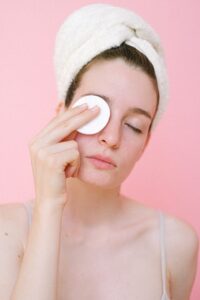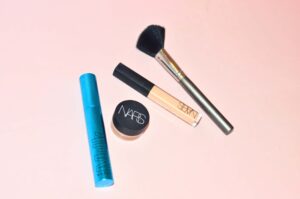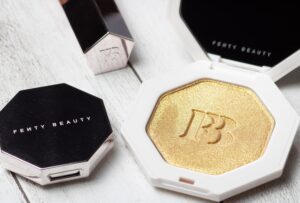Sleepless nights, fine lines, skin irritations, and concerns happen, and for all four (and even more) different surroundings there’s this proficient secret keeper, who got it all covered, called concealer.
Concealer is the makeup product that puts it all together. Being such an essential tool, a concealer can keep on doing wonders as long as it’s used properly. The versatility of this product allows us all to get playful, but knowing the in-depths of concealer application can add up to a perfect awakened, and radiant look.
In this guide, we have narrowed down the best concealer application techniques, use, tips, and the best concealer formula types, wanting everyone to know the advantages of this makeup product which is quite a breath of fresh air.


What is Concealer?
Concealer is a makeup formula that is similar to foundation, and it is used for coverage on areas subject to blemishes, dark spots, age spots, or hyperpigmentation, thanks to its correcting, thick consistency.
Where to Apply Concealer ?
Concealer application varies depending on your personal reason for concealer use. As we’ve covered, concealer is a multitasking makeup product. It can be used to hide skin imperfections, but coverage aside, concealers can make a great highlighting makeup product and a perfect tinted moisturizer or foundation if you want to apply it on your whole face.
Using Concealer as Contour
For concealer to act as a great contour stick you first have to pick a concealer two shades deeper than your natural skin tone, and this shade-guiding map should apply to your usual contouring product as well.
While contour application varies based on individual face shapes, the typical areas to focus on include the jawline, hairline, nose bridge, and the area beneath the cheekbones(basically lower face points).
You apply the concealer on these areas and then gently blend in an upward-downward direction, with the best angled brush you own or your makeup sponge.
How to Use Concealer as Highlighter?
You’re supposed to highlight the areas that the light naturally hits. For the highlighting technique, you use the light concealer shade you’d usually pick to cover blemishes. A shiny finish concealer formula when thinking of highlighting would be the right pick, but you’re free to choose since everyone’s skin concerns differ, and on someone, such a choice would end up looking creasing.
To accentuate the natural features of the face, focus on highlighting the high points. These areas include the brow bone, the area above the cupid’s bow, the inner corners of the eyes, the cheekbones, and the temples. Apply concealer to these areas and blend it seamlessly using a beauty blender, your ring finger, or an angled brush.
Keep in mind that when highlighting, you bring attention to the specific area, so you’d typically use concealer where you want to put the focus.
How to Use Concealer as Foundation?
If you don’t feel like putting a full face of makeup on, but you still crave a no-makeup makeup look, concealer is the right way to do it.
You wouldn’t put concealer on the same amount you’d put foundation though, since the product may end up looking creasy and cakey because of the different build-up formula it has from foundation. Accordingly, concealer is quite near an alternative to foundation rather than a substitute product.
On the other hand, concealer as a tinted moisturizer would do its thing, delivering an even tone and seamless appearance.
Also Read: What is Foundation Makeup: Types, Coverages and Finishes, Explained
How to Apply Concealer as Foundation?
The traditional way of putting on foundation or a tinted moisturizer product applies to concealers too. Applying on a dotted pattern and blending well with makeup brushes, preferably being thin-bristled, synthetic brushes, or fingers, and avoiding pressured motions causing streaks would be the right step to follow for an even product application.
Using Concealer for Dark Circles
Although concealer is not a makeup product that has limits, it is mostly known for its ability to be a great dark-circle remedy.
When using concealer for your under-eye application, ensure you’re opting for a concealer two shades deeper than your natural skin tone. Regardless of the formula you choose for yourself, the application technique remains the same.
Begin by applying the concealer to your under-eye area, extending it up to the outer edge of your eyebrow to create a lifted appearance. Remember that sometimes less is more. In most cases, a small amount of concealer is sufficient, avoiding the need for excessive layering that could result in a flaky or cakey look.
You can simply spread the product with a beauty blender or your ring finger, applying gentle pressure.
Picking the right Concealer Shade
Different targeted face areas require different concealer shades. For example, if you want to brighten up your dark circles, you should pick a concealer that’s one to two shades lighter than your natural skin tone. But if you want to put concealer in use due to the appearance of blemishes or dark spots throughout your skin, it’s better to choose a concealer that matches your skin tone perfectly.
How to Apply Concealer ?
Preparing your skin with a primer
Primer should always be the first go-to before you grab any makeup product. Creating that extra base that allows the skin to breathe, concealer to sit well and last longer, at the same time, makeup primer leaves no room for discoloration, uneven skin complex, or fine lines.
Picking the Right Concealer Formula
Liquid Concealer
Liquid concealer is suitable for all skin types and provides comprehensive coverage when applied with the intention of achieving full coverage. Most liquid concealers have hydrating properties as well, making this formula the right choice for those aiming to cover under-eyes dark circles while adding brightness to the skin (more depth).
Liquid concealer is also one of the long-lasting coverage formulas, not wearing off after a few hours of application.
When selecting a liquid concealer for your makeup collection, there are several factors to consider. Firstly, pay attention to the shade, ensuring it matches your skin tone accurately. Additionally, consider the desired finish of the concealer, which can be dewy, satin, or matte. Lastly, evaluate the coverage it offers, opting for a concealer that provides the level of coverage you desire for your specific needs.
Cream Concealer
When compared to a liquid formula, cream concealer is more of a buildable-coverage product. While having a natural finish, the product has more of a thicker texture, delivering instant results in covering blemishes or dark spots.
Cream concealer can be used on any skin type and is also highly preferred for those with dry skin type, because it offers quite a hydrating makeup solution, giving good moisture to the skin.
While cream concealer is very easy to apply, because it’s thicker in consistency, it should be blended well with a gentle hand motion, making sure the applied area gets the product properly.
Cream concealer usually comes in a pair of pots or a palette with a range of shades. The right cream concealer would not budge until you want it to, would stop pores from clogging, and would conceal the dark spots, hyperpigmentation, and fine lines and smooth the uneven skin tone out.
Stick Concealer
The best bet for those with acne-prone skin, and oily skin types, stick concealer is a formula that offers good coverage. Just like a cream concealer, stick concealer is also thick in texture, which helps you get a promising brightening outcome on skin imperfections or concerns.
Skin concealer is a clever step when wanting to even the skin tone up. Diminishing the redness of the skin, blemishes, dark circles, or redness, a stick concealer assists in being a staple of your makeup routine.
Given the name, a stick concealer usually comes housed in a stick. The top of the product is angled so the application process is smooth, even when maneuvering techniques such as highlighting or contouring.
A good skin concealer is oil-free, medium to full coverage, hypoallergenic, and comes in a satin finish so the skin-hydrating ingredients aren’t left out.
What is Color-Correcting Concealer?
Color-correcting concealer, unlike classic concealer, should be applied underneath foundation for its results to appear. Color-correcting concealer helps with neutralizing skin-deep discoloration complex, redness, or inflammation.
This product typically comes in palettes of color ranges, which cancel or really ‘conceal’ each other out. Every color treats different pigmentation.
- Purple and blue color-correcting concealers help with neutralizing red and orange pigmented skin complexes.
- Peachy, red, and orange color-correcting concealers help with blue-purple hues, vanishing the dark circles.
- Green color-correcting concealers minimize skin redness caused by different conditions such as acne or rosacea.
- Yellow Color-Correcting concealers are great for treating purple-toned blemishes, disguising dark spots, and are commonly used to cover dark circles.
- Pink color-correcting concealers neutralize yellow and mild green tones, helping with sallow or dull skin coverage.
What’s SPF Concealer?
SPF ingredients came a long way over the last two decades or so, and it’s a no-brainer that the benefits they deliver are too good to not be put as ingredients in every makeup or skincare product that surrounds us today.
Investing in an SPF concealer will help on improving skin imperfections and guarding the skin against the sun rays’ cons. The sunscreen on your concealer will provide that additional protection from the harmful UVA and UVB radiation, but this doesn’t mean you’ll have to choose between coverage or shielding, because an SPF concealer does all the work.
While an SPF concealer is great for every type of skin, a good broad-spectrum, hydrated, coverage, and lightweight formula are things you should look out for when hunting the market for your next pick.
Concealer and SPF make a great solution when manufactured in a single packaging, but not when applied as separate products. If concealer and SPF are mixed with the hope of getting a dash of SPF concealer, both the products will lose their essence, making the skin prone to sun rays and the blemishes not concealed away.



